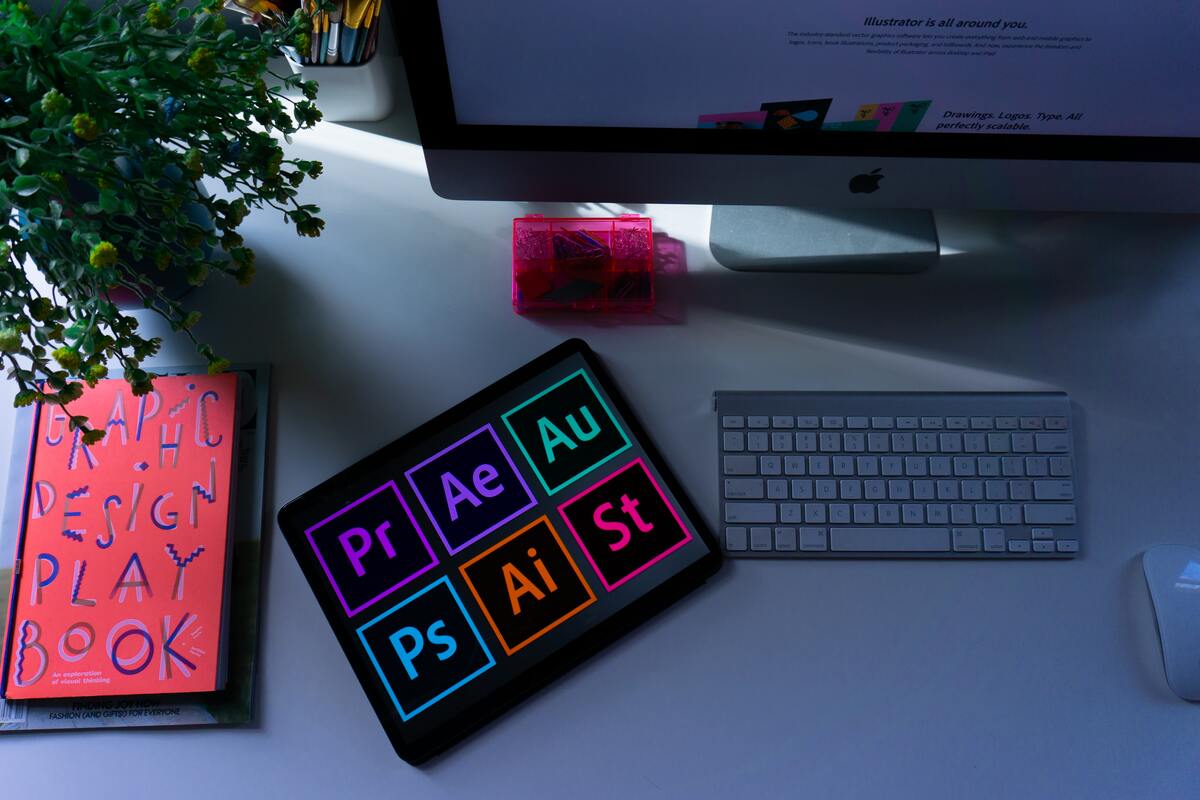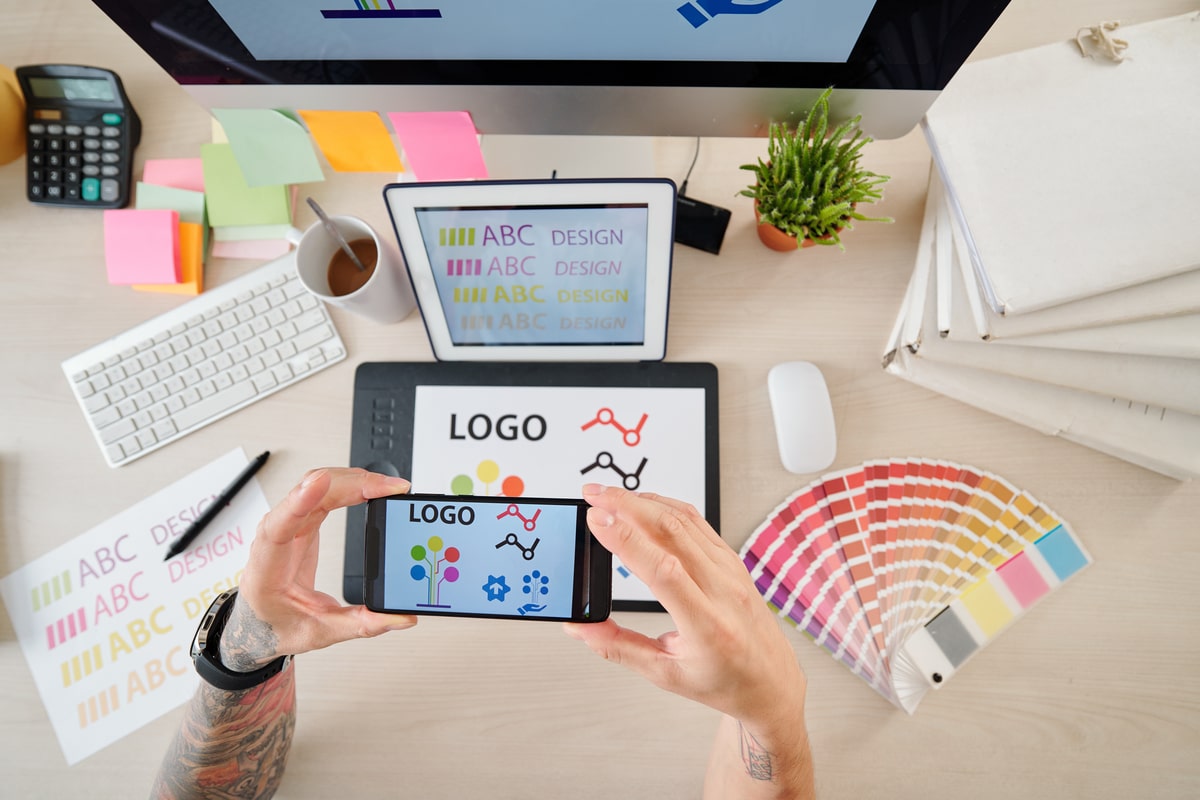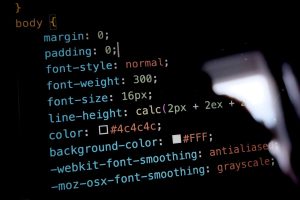You understand the value of having a well-designed logo as a business owner. One of the first things that prospective buyers will see is your logo. Therefore, it must leave a positive impression. A logo is an effective marketing tool that helps develop your company’s brand recognition and distinctive identity.
Working with a professional logo designer is essential to ensuring your logo is successful and memorable because there are numerous elements to consider.
When creating your logo, bear the following in mind:
- Keep things simple. A good logo needs to be uncomplicated and straightforward to comprehend. It should be visible and recognizable even when exhibited in a small size.
- Your logo ought to be distinctive. It should stand out and be memorable by being distinct from other symbols in your business.
- Your logo ought to be adaptable. It should be suitable for use in a range of settings, including on your website, business cards, and marketing materials, and it should appear well in both color and black and white.
- Your logo ought to represent your company. It should reflect the essence of your company and convey the message you want to get through to your intended audience.
- Your logo ought to last a lifetime. It should be traditional and timeless rather than trendy or out-of-date so that it can be utilized for many years.
A strong logo is a valuable asset for any company. It can assist you in developing brand recognition, forging a distinctive identity, and winning over prospective clients. To create a logo that will be powerful and memorable, keep in mind simplicity, originality, adaptability, and Timelessness.
A Skilled Logo Designer’s Contribution to the Development of a Brand’s Identity
One of the most crucial components of a brand’s identification, a logo serves as the public face of a business. A company’s logo is frequently the first thing that customers will notice. Therefore, it must be effective. A talented designer can produce a great logo that accurately reflects the business.
Since a logo will be used on various products, such as business cards, websites, and promotional items, it should be straightforward to recall. It should also be scalable and used in multiple sizes while maintaining quality. A talented designer can make a logo that satisfies each criterion.
A talented logo designer will be able to assist with a company’s entire branding in addition to producing a logo. The business’s marketing materials will be able to use the color scheme and font they develop. In addition, they can assist in developing a style manual that will be followed by everyone in the business, from the sales staff to the customer support agents. A logo designer may assist in building a solid and recognizable brand identity by maintaining a unified appearance and feel throughout the company’s assets.
A talented logo designer can be a great asset if you’re trying to build a strong brand identity for your business. They may assist in designing a logo that is straightforward, simple to remember, and scalable. By establishing a unified appearance and feel throughout all of your company’s documents, they can also assist with the overall branding of your business.
Colors, typography, and shapes are crucial to an effective logo design.
Effective logo design must-have colors, typography, and shapes. Let’s examine each one in more detail.
Colors
Your logo’s color scheme can reveal a lot about your brand. Making thoughtful choices is crucial because they can convey various feelings and thoughts.
Some companies use striking colors to draw attention. Others employ quieter tones to project an air of sophistication. Others combine the two to provide a more balanced appearance.
Consider the emotions you want your brand to convey, then pick colors to support those feelings.
Typography
The typography of your logo is equally as significant as the colors. Your logo will stand out using the proper typeface to express the right message.
Consider the various personality features of each font type and pick one that fits the mood your brand should evoke.
For instance, the simplicity and modernity of a sans-serif typeface like Arial can be felt. On the other hand, a serif typeface like Times New Roman exudes a sense of heritage and gravitas.
Shapes
Your logo’s shapes can also convey much information about your brand. They may be geometric or organic, simple or complicated.
Consider the various connotations associated with each form and select the one that most accurately conveys your brand.
For instance, a square exudes solidity and dependability, whereas a circle exudes a sense of togetherness and unity.
These are only a few factors to consider while creating a logo. You may design a logo that accurately represents your brand by giving each one some thought.
Critical Stages in the Process of Logo Design, Research, and Analysis
There are four essential processes I use as a logo designer while investigating and evaluating a project:
-
Specify the project’s aims and goals.
Understanding the aims and objectives of the client is crucial before beginning any design project. What does the logo’s purpose are? What point are they attempting to make? Who are they trying to reach? By providing answers to these queries, you can direct the design process and ensure the finished product is functional and authentic to your brand.
-
Examine the industry and rivals of the client.
After learning about their objectives, I researched the client’s industry and rivals. It enables me to understand the overall scene better and determine the best design solutions. I also examine the client’s current branding materials to determine what works well and may be improved.
-
Examine the research’s findings.
I start to analyze the findings of my investigation after I have all the essential data. It aids in my ability to spot any patterns or trends that might apply to the project. I also utilize this data to create a creative brief, a statement of the project’s objectives, key audiences, and critical messages.
-
Create first ideas.
I started to create the initial concepts for the logo after the research and analysis stage was finished. Beginning with a few rough sketches, I usually go on to polish them into more finished designs. Before showing the client my concepts for comments, I typically develop three to five.
These are the four essential processes I use while investigating and evaluating a project for a logo design. I can create more efficient designs consistent with my brand by taking the time to comprehend the client’s goals and objectives, studying the market, and evaluating the results.

Finding Ideas: Examining Current Trends in Logo Design and Successful Examples
Logo designers must stay current with current logo design trends. It aids in creating innovative, cutting-edge designs that your clientele will like. It may also be beneficial to get ideas from compelling logo design examples. We’ll look at five techniques in this blog post to get ideas for your upcoming logo design assignment.
-
Examine the most recent developments in logo design.
New trends in logo design are constantly evolving. Examine some of the most recent trends to see how you may incorporate them into your plans to stay ahead of the curve.
-
Examine successful logo design samples.
Examine some famous logos to learn what makes them so powerful. What features do they share? How do they spread the brand’s message?
-
Allow nature to inspire you.
For logo design, nature is a fantastic source of inspiration. Look at some of the most recognizable logos in the world to discover how they use aspects of nature.
-
Examine geometric logotypes.
Designs for geometric logos are getting more and more common. Consider using geometric shapes to create something contemporary and new in your logo design.
-
Make use of white space while creating your logo.
An effective tool for producing eye-catching logo designs is negative space. To give your plans more depth and appeal, use negative space.
You can obtain ideas for your subsequent logo design project by paying attention to these five pointers.
Creating Conceptual Sketches to Bring Ideas to Paper
One of the most crucial abilities you can have as a logo designer is the capacity to conceptualize and sketch your ideas. After all, a logo’s primary function is to serve as a symbolic representation of a business or brand. And what better method to accomplish it than to put your ideas into words?
You can go about drawing and conceptualizing your ideas in several different methods. The first is to begin drawing on a blank piece of paper. It is a terrific approach to rapidly write down your thoughts and get a sense of the style of your desired logo.
Another strategy is to begin with a sketch of a fundamental shape, like a circle or square. You can then start to add your logo’s details from there. It is a fantastic method to give your brand a more sophisticated appearance.
In either case, it’s crucial to write down your thoughts. Once you’re satisfied with your initial sketch, you can improve it. You can start adding color, shading, and other features here.
The most crucial thing to remember is that a logo is meant to be straightforward. It ought to be simple to recognize and identify. Focus only a little on the specifics. Just write down your thoughts and ensure your logo is recognizable and readable.
Making Use of Design Software Tools and Techniques to Create Digital Logos
There are several ways to create digital logos using design software tools. Utilizing them to produce vector graphics of your logo is one method. First, draught your logo concept on paper, then scan it into the software. As soon as you have it in the software, you can utilize the various vector drawing tools to create a polished, expert-looking logo.
Making a raster image of your logo is another method of using design tools for logo creation. The logo can be created in a pixel-based program like Photoshop and saved as a high-resolution image. The image can then be cleaned up and given a more professional appearance by importing it into a vector-based program like Illustrator.
In either case, the key is to try different approaches and see which ones are most effective for you. There is no one “right” method to create a logo using design software tools. Therefore, try using your imagination to come up with anything!
Iterating and Refining: The Revision Process for Logo Design
Being forced to change a client’s logo is familiar to designers. It can be challenging because you need to balance the client’s requests for revisions with keeping the integrity of the original design. Here are some pointers for handling changes to logo designs:
- Start by standing back and examining the design as a whole. Could you alter anything that would have a significant effect? Sometimes, minor details can have a considerable impact.
- Next, examine each component of the design separately. Is there anything you can alter or adjust that would be significant? It can be helpful to experiment with various color schemes and font styles.
- Lastly, get the client’s opinion. What features of the design do they like? What are they opposed to? What modifications do they want to see? This criticism will be constructive as you improve the design.
If you keep these suggestions in mind while you edit your logo, you’ll produce a design that the client adores.

Collaboration with Clients: Feedback and Effective Communication
Effective client communication is one of the most crucial components of your job as a logo designer. It involves having the ability to offer criticism that is both encouraging and helpful. After all, your clients entrust you with their brand identity, among their company’s most crucial components.
Here are four suggestions for working with clients and providing insightful feedback:
-
Communicate clearly and succinctly
Being concise and straightforward while speaking with clients is crucial. It requires both the ability to communicate your ideas and the capacity to pay attention to and comprehend your client’s goals. Responding to any queries or worries your client may have is also crucial.
-
Show consideration for your client’s time.
Your client is giving you great responsibility, and they value their time. Be organized and effective in communicating to show that you appreciate their time. It entails being prompt in your responses to their questions and explicit about what you require of them to proceed.
-
Welcome criticism.
The exchange of feedback is an essential component of any partnership. Remember to provide clear, concise, and respectful feedback. And when you get comments, be receptive and eager to consider your client’s viewpoint.
-
Show professionalism
It’s crucial to act professionally during the entire procedure. It entails respecting your client’s time, being receptive to criticism, and communicating succinctly. Remember that you have been given a crucial part of your client’s business. Make sure your partnership is fruitful by adhering to these pointers.
Designing Logos with Different Platforms and Applications in Mind
One of the most crucial components of a company’s branding is its logo. It can be used on various platforms and applications to represent the business visually. A few factors must be considered when creating a logo for multiple platforms and applications.
The size of the logo should be taken into account first. The logo should be simple and readable in small sizes. The logo must be simple to resize without losing any quality.
The color of the logo should be taken into account second. The logo should be straightforward to see and understand on light and dark backgrounds. Additionally, it needs to be simple to print in both black and white and color.
The file type of the logo is the third factor to consider. The logo should be saved in a vector format for ease of resizing. It should also be held in a high-resolution form for printing.
The use of the logo is the fourth factor to take into account. All platforms and applications should utilize the logo consistently. Nothing should be done to change it.
The logo’s trademark is the fifth and last factor to consider. The logo should be registered as a trademark to protect it.
An essential component of branding a business is creating a logo. There are a few factors to consider when creating a logo for various platforms and applications. Considerations should be made regarding the logo’s use, size, color, file format, and trademark.



